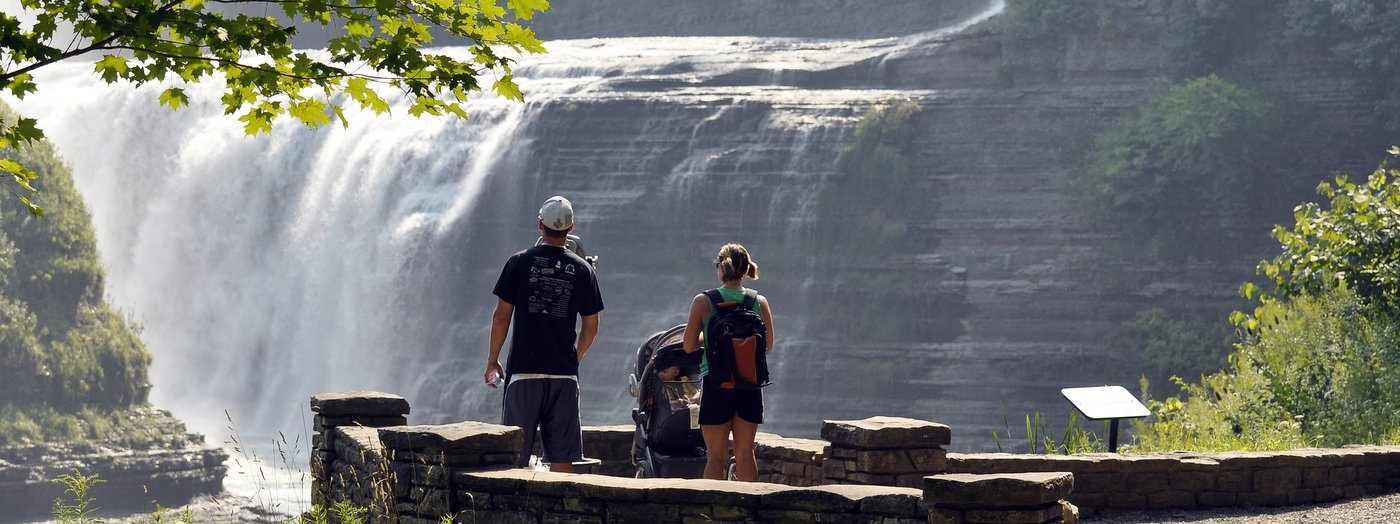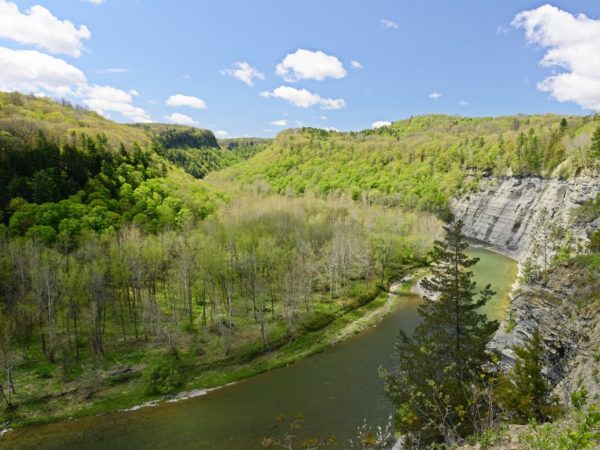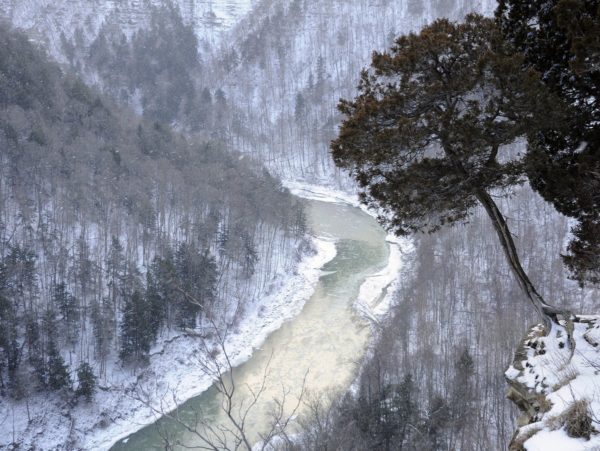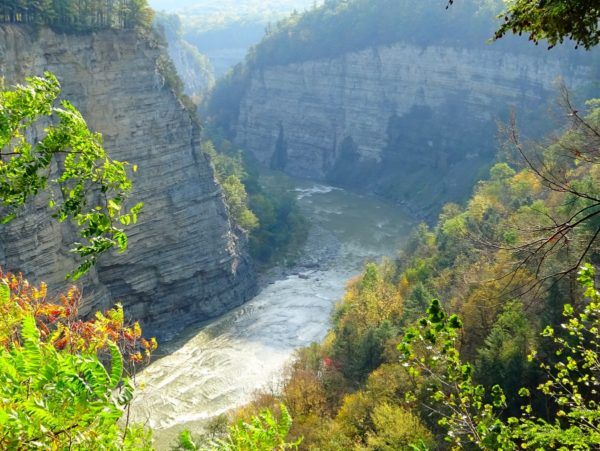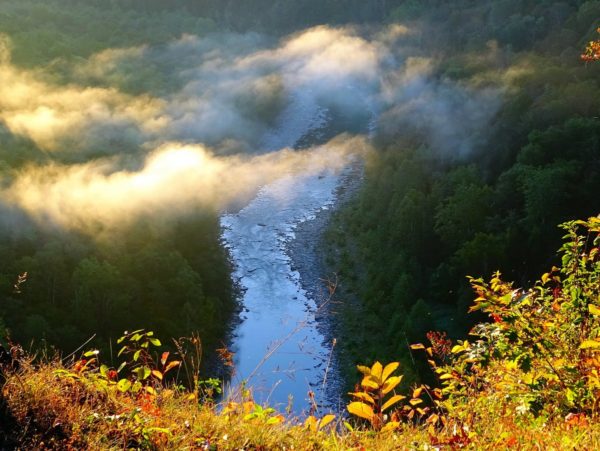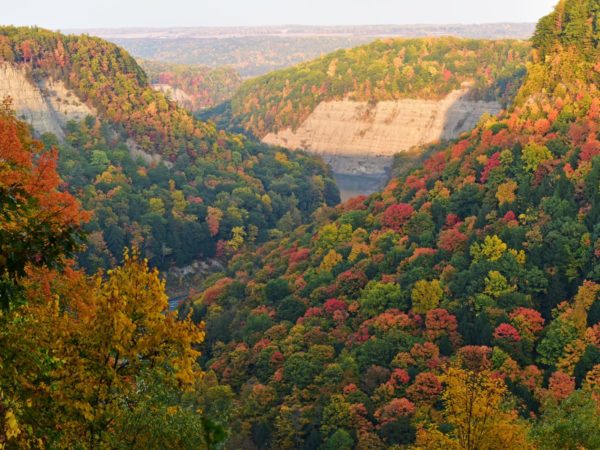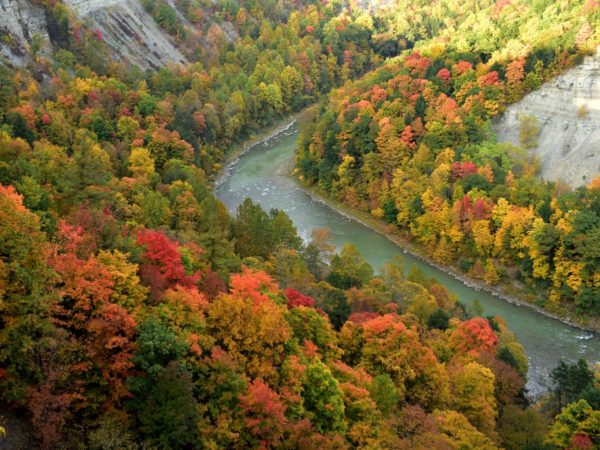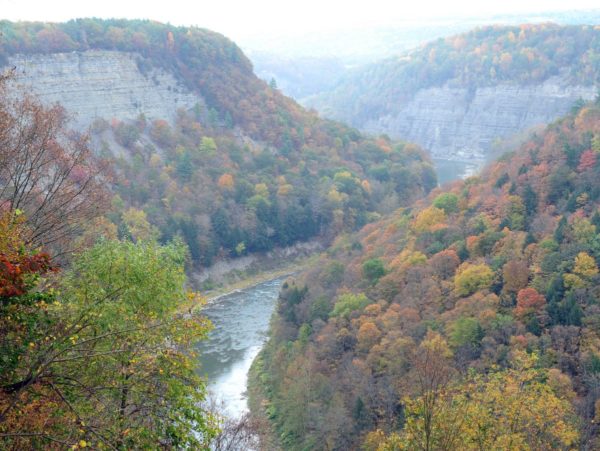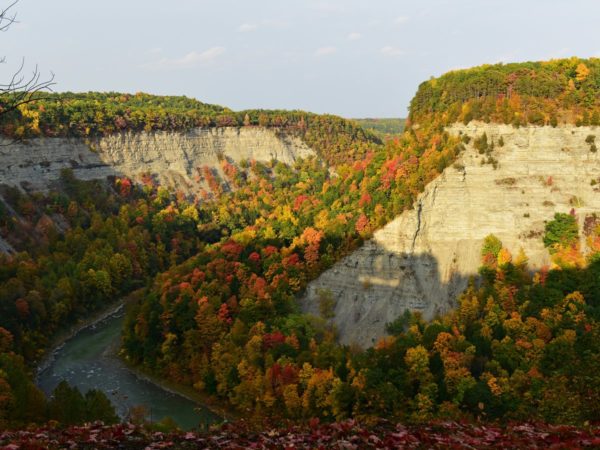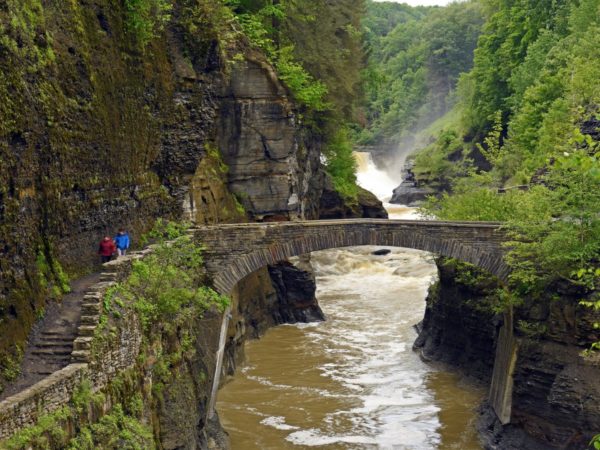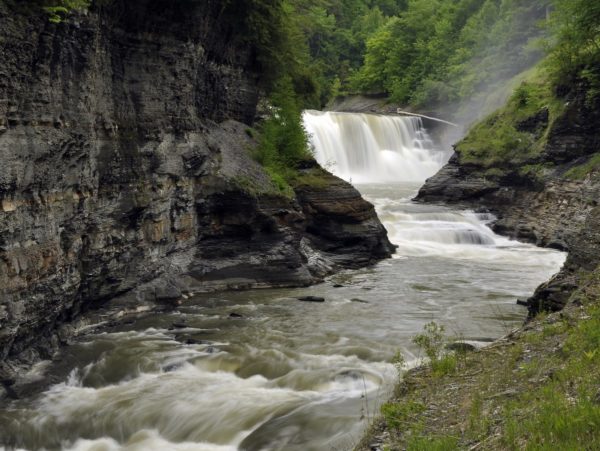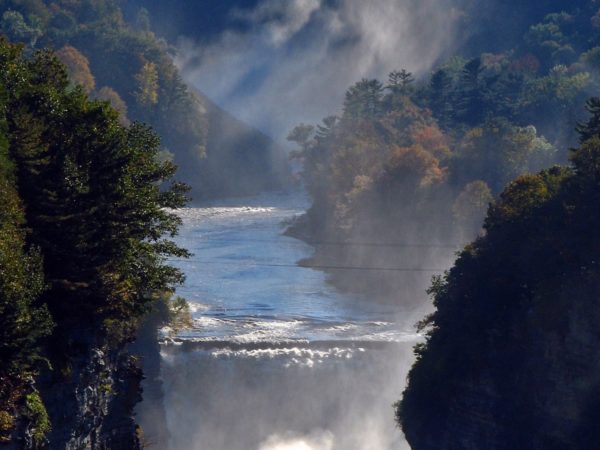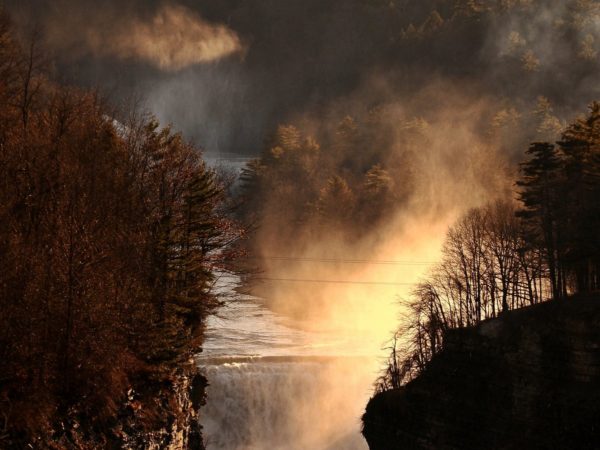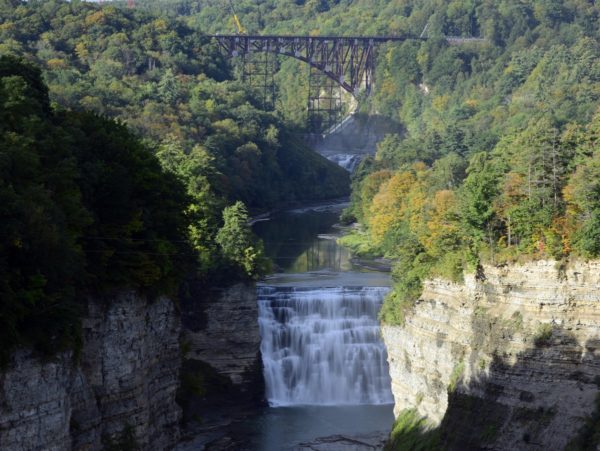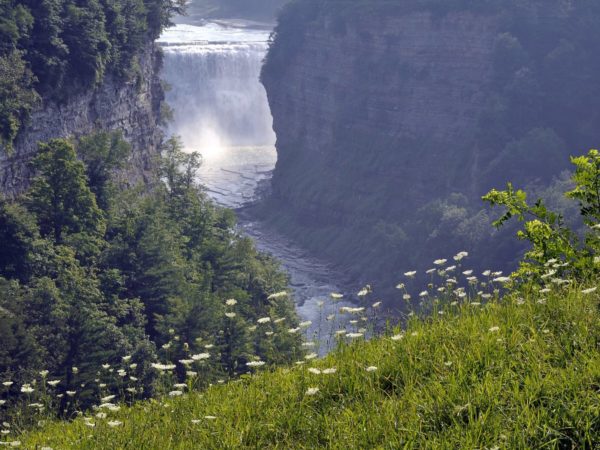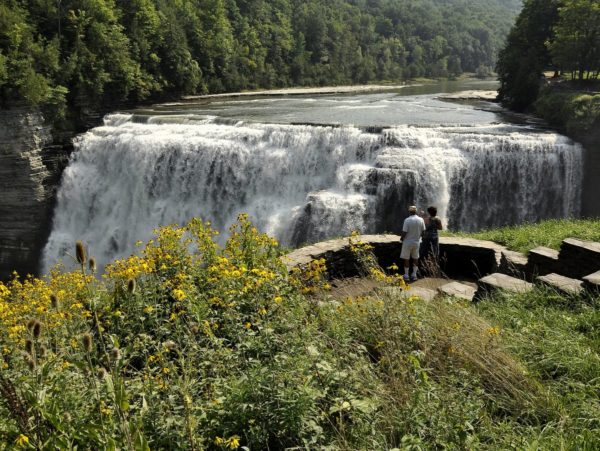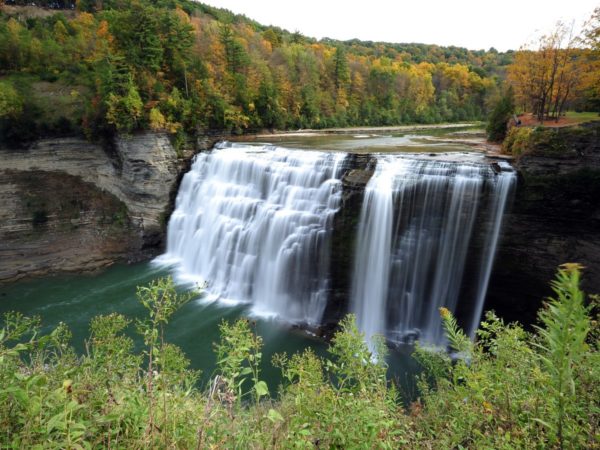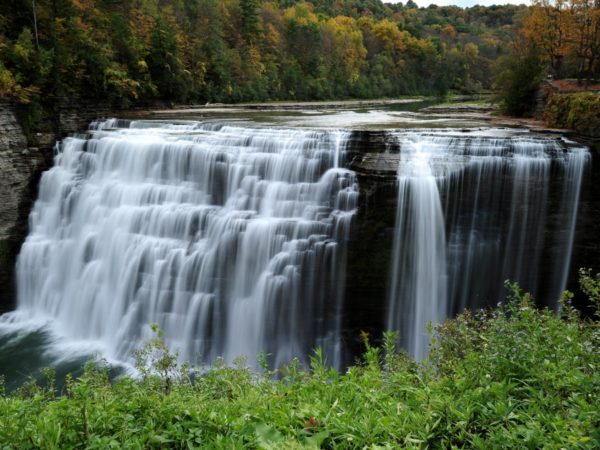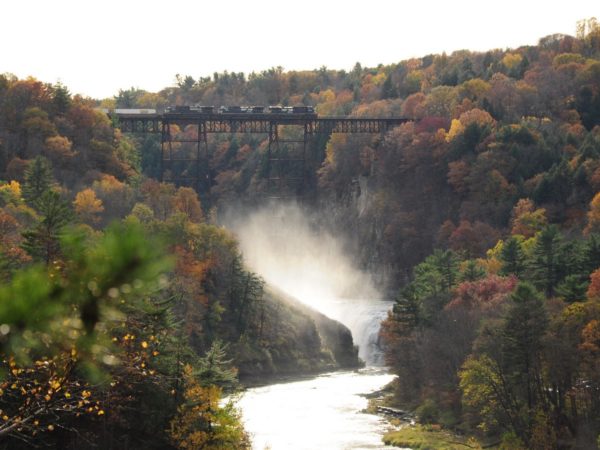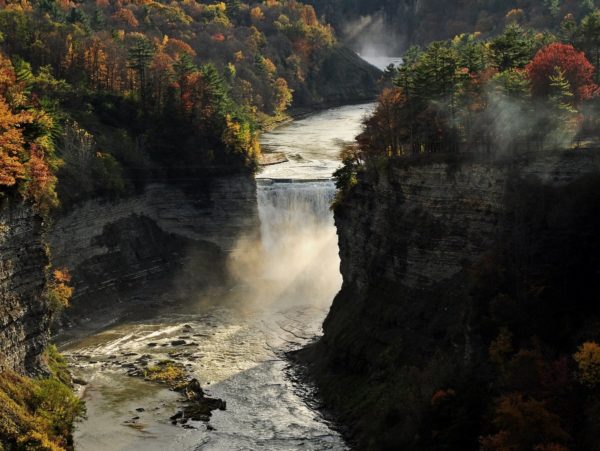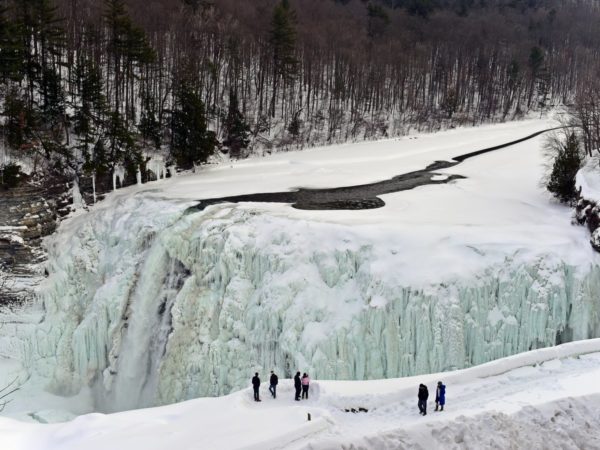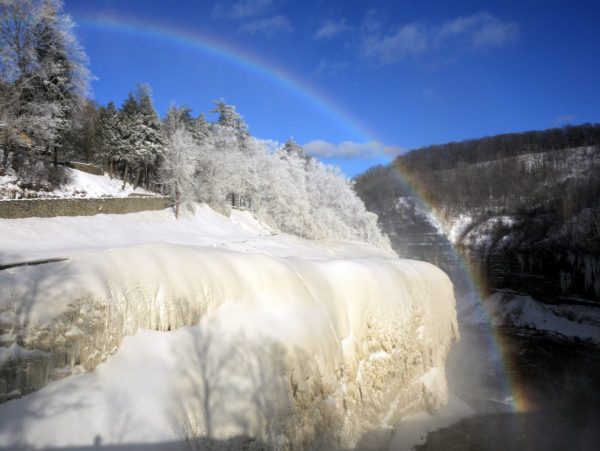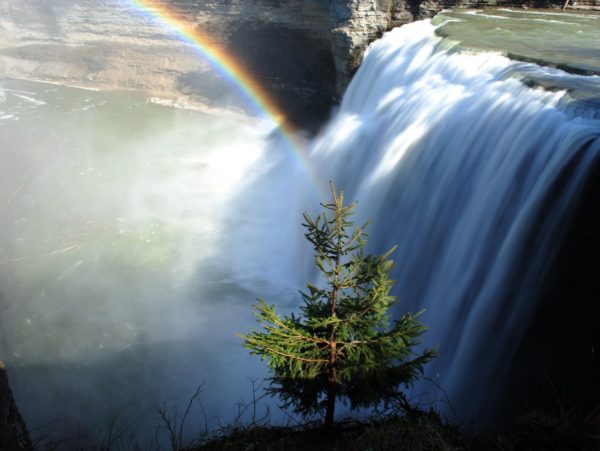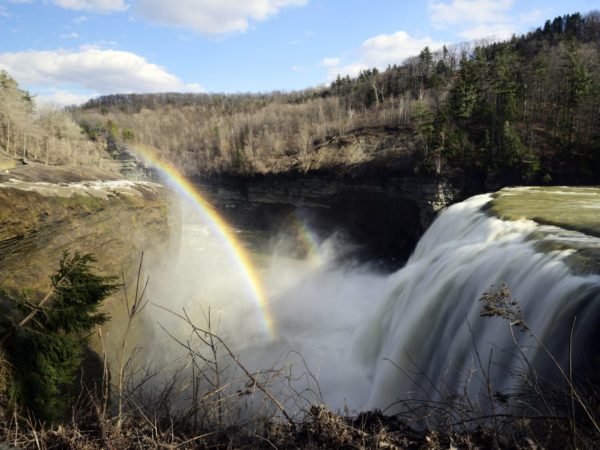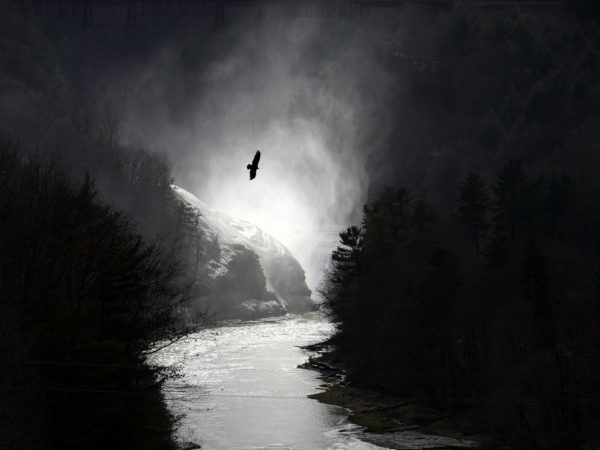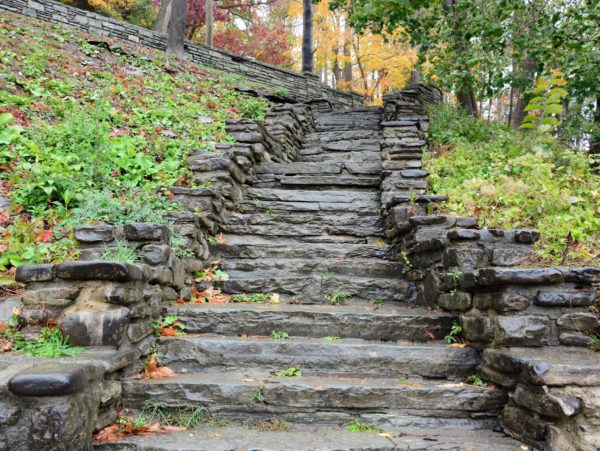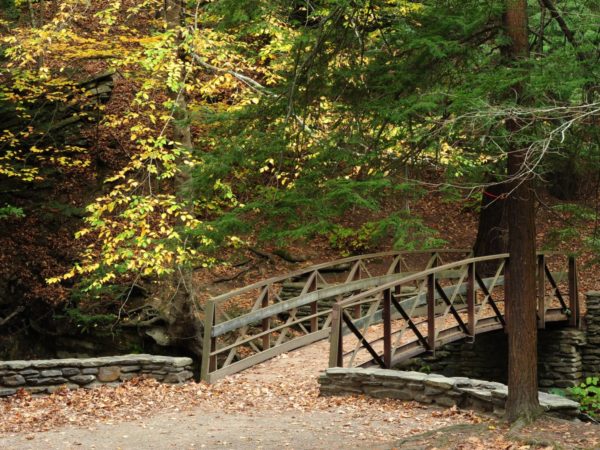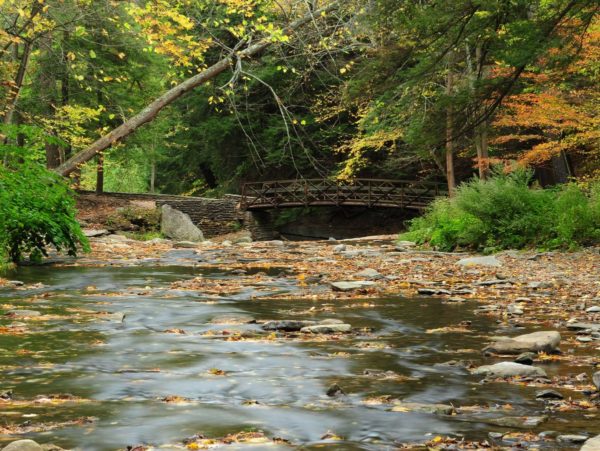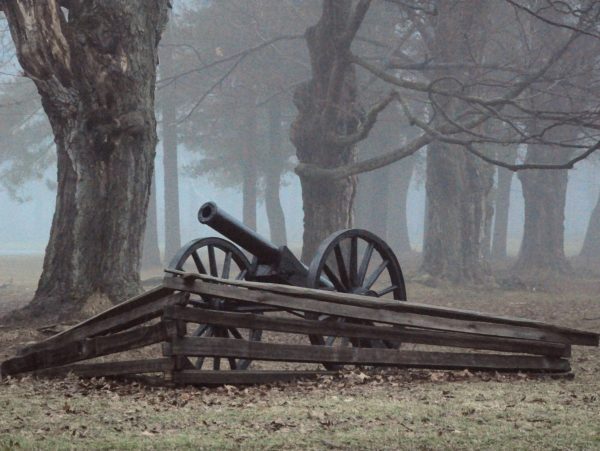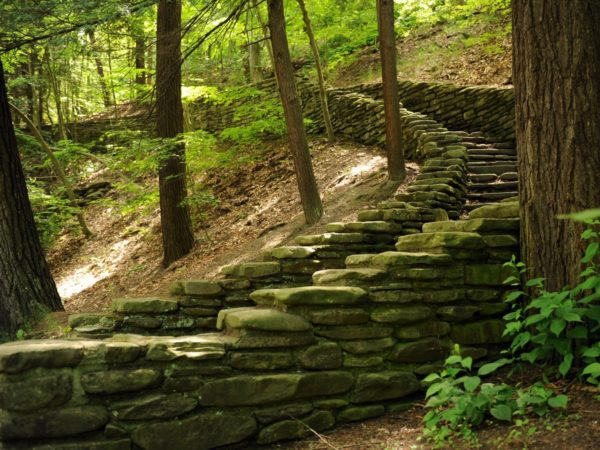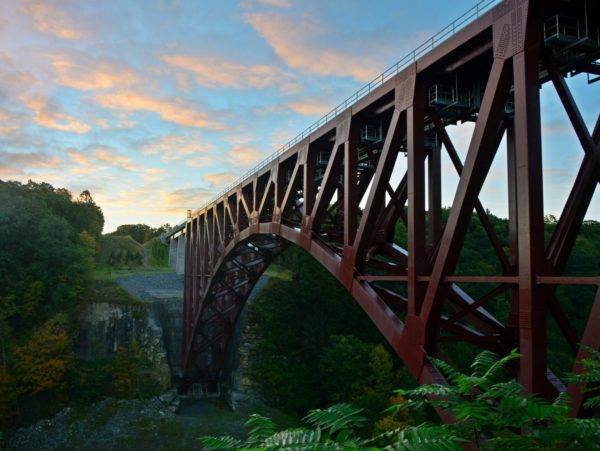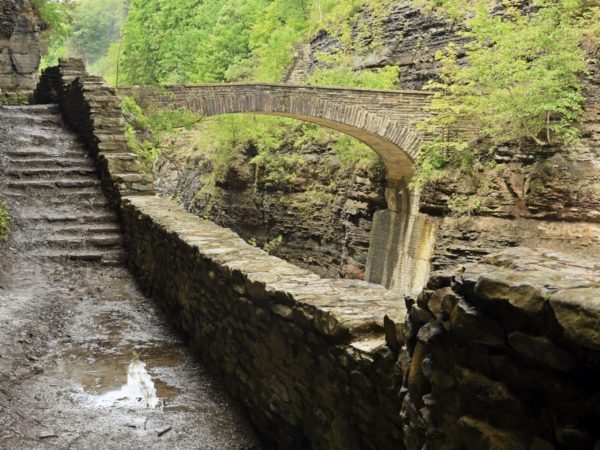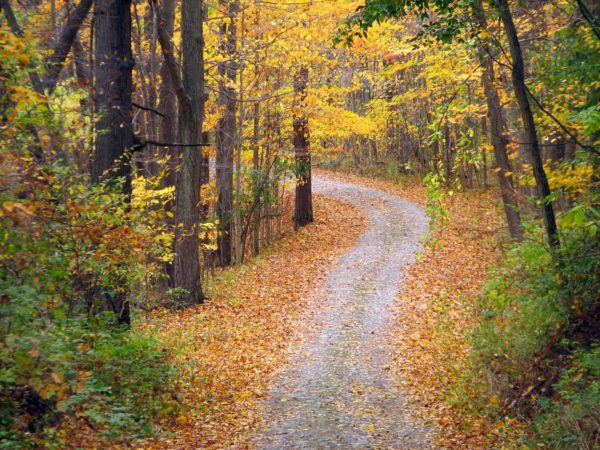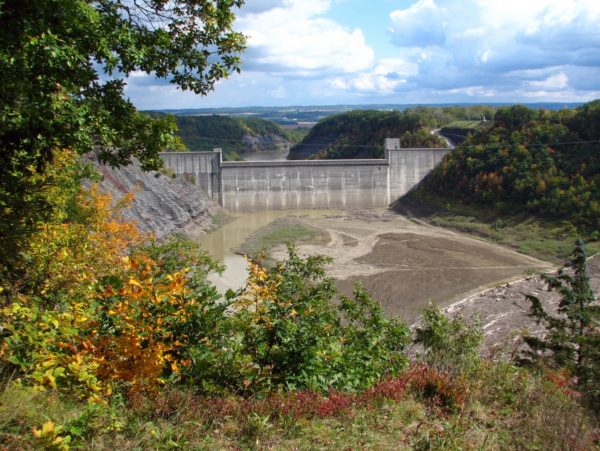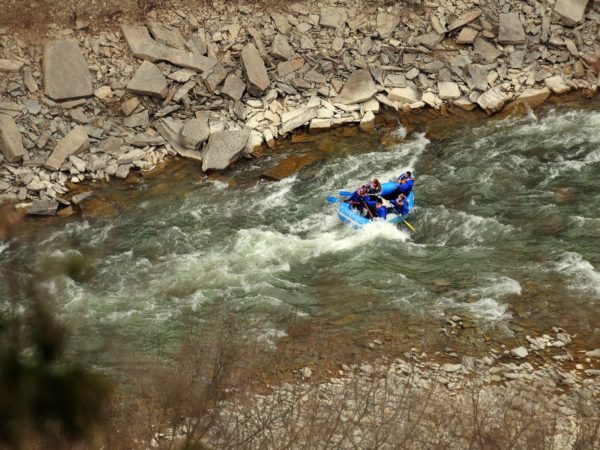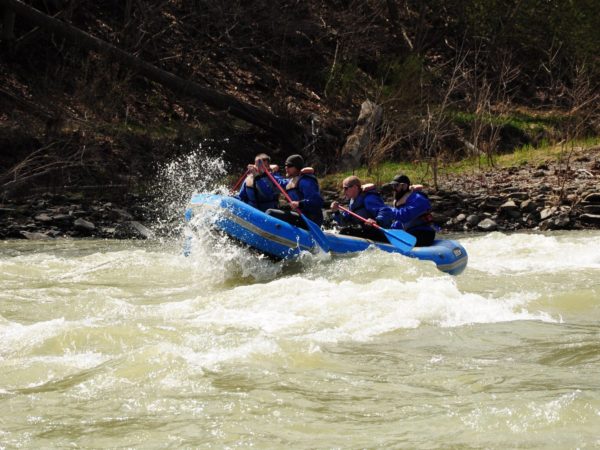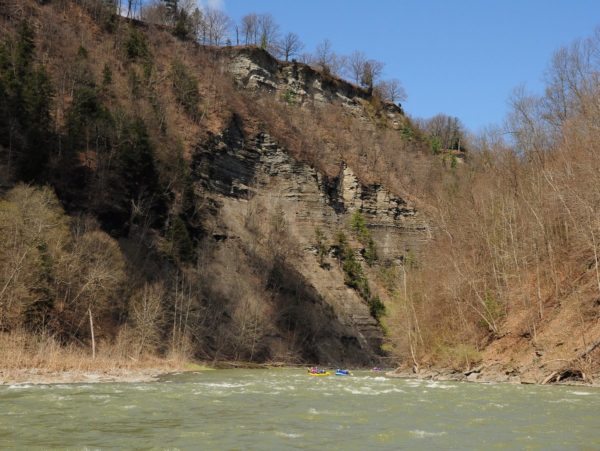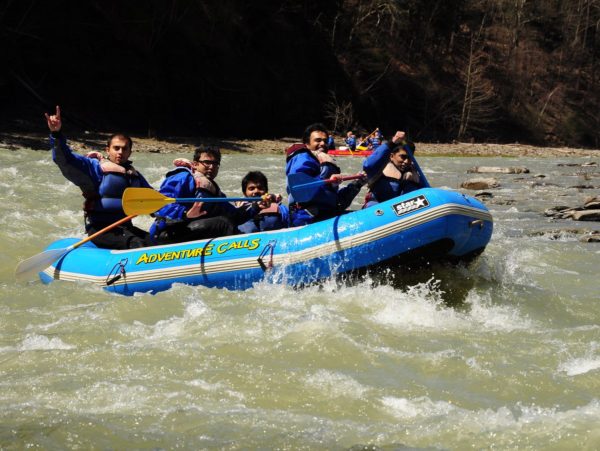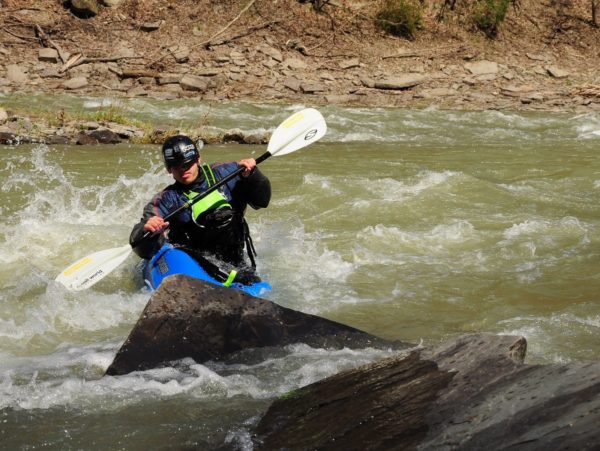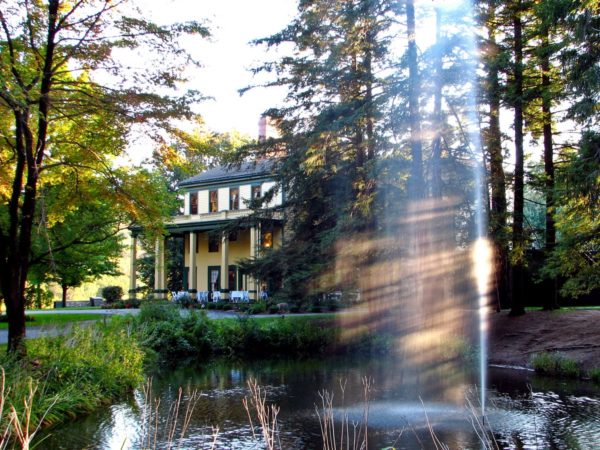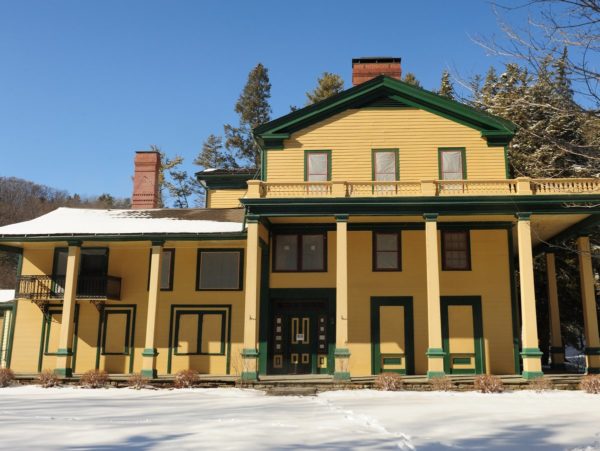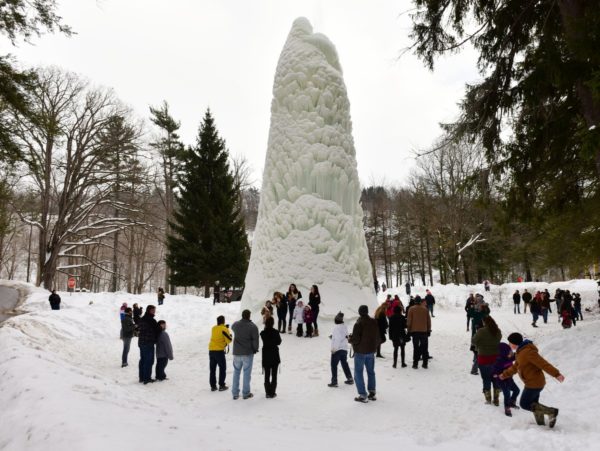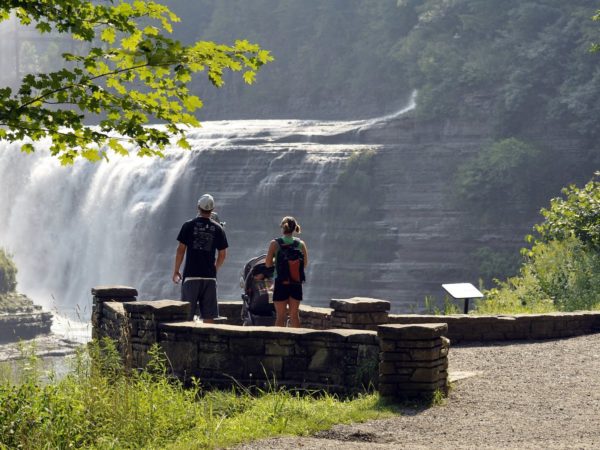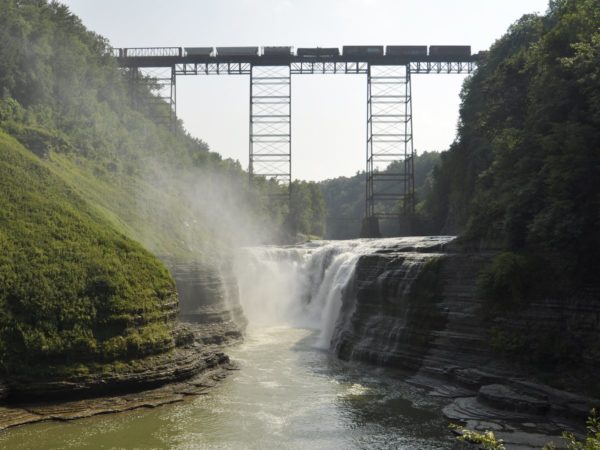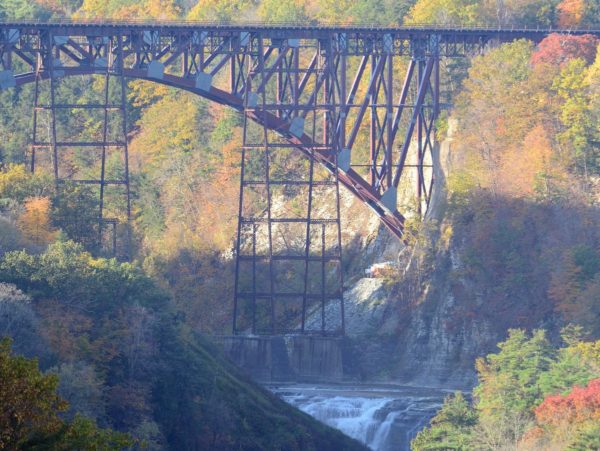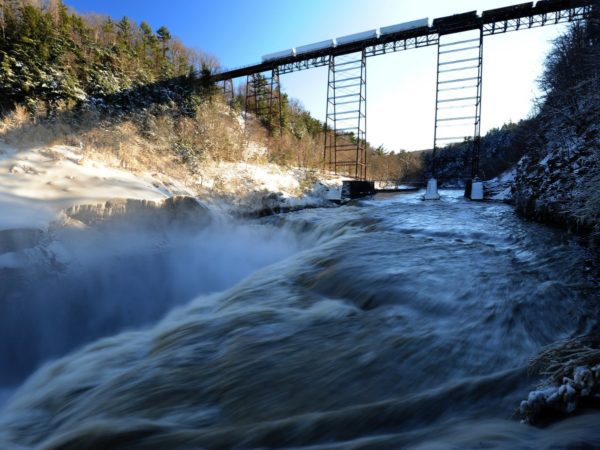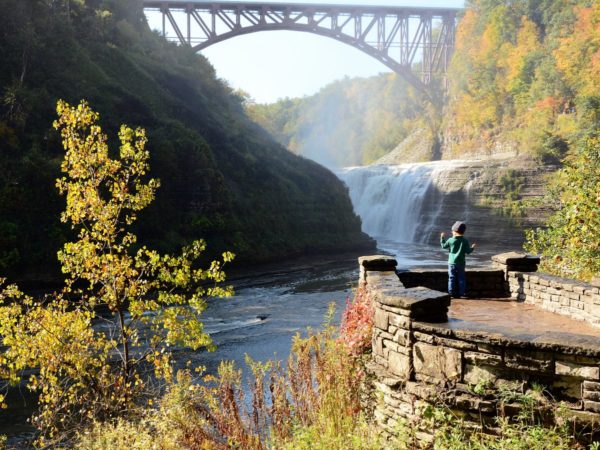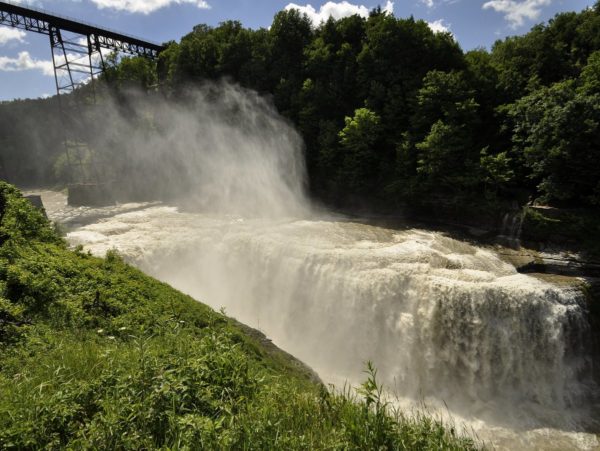A lot of places claim to be the Grand Canyon of the East, and while none truly compare in terms of scale, Letchworth State Park’s grandeur and unique opportunities make it a can’t-miss natural wonder. The park and its rich history encompass seventeen miles of staggeringly sheer gorge, three towering and broad waterfalls, dozens of smaller waterfalls, 66 miles of trails, an abundance of overnight options, and opportunities to explore the park via foot, bike, horse, raft or even hot-air balloon!
Looking at the immense gorge walls, nearly 550 feet in sections, it is hard to fathom that this gorge is relatively new, geologically speaking. In fact, only a few millennia ago the main Genesee River did not flow through this area, though a smaller tributary did. The preglacial river’s headwater originated southeast of Mount Morris near Dansville. Like many river beds in the region, the mile-high ice sheet of the last glacial period filled in the river valley with glacial till. Where its southward advance stalled, an immense terminal moraine formed, damming the old river bed and diverting the headwaters southward into the Susquehanna River watershed. A similar process occurred along the western tributary that flowed through Letchworth, but instead, a glacial lake formed. Eventually, the lake broke through and the smaller tributary began washing away glacial till and cutting new gorges through the western valley, ultimately reconnecting with the old Genesee River valley near Mount Morris.
The massive reshaping process is visible in the three distinct lower, middle, and upper gorge sections of Letchworth State Park. The newly carved gorges in the lower and upper sections are narrower and steeper, while the broader middle section is an older gorge where the glacial till was washed away. Other iconic Finger Lakes’ gorges such as Taughannock or Enfield Glen show similar patterns of intermingled new and older gorges but not nearly on the scale present here.
With 66 miles of trails, hikers have a lot of options and can even plan overnight or multi-night backpacking trips. The trail network is essentially divided into two sections: trails to the east and west of the gorge. A single bridge downstream of the Lower Falls connects the two, otherwise, the two trail systems can only be reached by leaving the park and reentering on the other side. There is a greater quantity of trails on the western side of the gorge, with most branching off from and paralleling the main Park Road. Most lead to scenic overlooks with panoramic views of the gorge. Some accounts say there are 30 waterfalls in the park while others claim 50. The three largest falls – Upper, Middle, and Lower Falls – steal the show in their grandeur. All three are located in Portage Canyon in the southern section of the park and can be seen on the most popular of the trails, the 7-mile (one-way) Gorge Trail.
Note that the Gorge Trail can be hiked in smaller sections and accessed at many points since it follows the rim of the gorge and only dips down briefly at a lookout below Lower Falls. Trails in the middle and northern end of the park offer more solitude but with less dramatic views. The main feature of the eastern trails is a 24-mile section of the Letchworth branch of the Finger Lakes Trail, which some call the most beautiful branch trail of the system. A handful of spur trails provide access points to roadside parking along River Road, which parallels the park’s eastern boundary. The eastern side is remote, promising ample solitude, and is more akin to a state forest experience than a state park. However, most state park rules still apply and overnight trekkers need will need a free camping permit to use the trail shelters.
A single-day trip will likely not be enough to take in all the experiences, and fortunately, there are many overnight opportunities available within the park: 260 tents sites/trailer sites, 80 cabins, and even an Inn. The Glen Iris Inn was the estate of philanthropist William Pryor Letchworth, who gifted the park to New York State in 1906 after building up the estate over 50 years. William Pryor Letchworth’s acquisition of the land in 1859 prevented hydroelectric dams from being installed within the gorge, effectively preserving the land for future generations to enjoy. Other examples of the park’s history can be seen in the remnants of infrastructure from the Genesee Valley Canal and railway lines that connected to the park during the Industrial Revolution. The Parade Grounds were the training area for First New York Dragoons during the Civil War. Interspersed throughout the park are other historic landmarks that describe the life of pioneers and Native American history within Sehgahunda (the “Vale of the Three Falls”). Much of this history is captured in the William Pryor Letchworth Museum that provides greater depth on natural and cultural history.
In the most general terms, you could divide the park into three distinct areas: northwest, southwest, and eastern. The southwestern portion of the park includes most of what would be considered day-tripper activities. Here you find the three main waterfalls, clusters of picnic areas with playgrounds and concessions, museums, a nature center, the Glen Iris Inn, as well as the more popular and built-up trails. Within the northwestern section is an Olympic-sized swimming pool, campgrounds, and less frequented lookout trails. The eastern section is essentially the wilderness portion of the park where long trekkers will find comfort in the lack of amenities and crowds.
The country’s first nature trail specifically designed to address the sensory needs of people on the autism spectrum was opened at Letchworth State Park in 2021. The Autism Nature Trail is a one-mile hiking loop that includes eight sensory stations, each designed to address a different sensory experience in a safe and supportive environment. Activities along the Autism Nature Trail support and encourage sensory perception and integration, while also providing enjoyable activities for visitors of all abilities and ages. Located near the park’s Humphrey Nature Center with parking and restrooms, the ADA-compliant trail was designed with input from Dr. Temple Grandin, one of the world’s most well-known advocates for the autistic community.
The park is open year-round and each season brings its own flavor to the scenery: the waterfalls are full raging torrents in the spring; summer brings lush and verdant foliage; in the fall the gorge is emblazoned with autumn colors; and, winter brings a frozen wonderland of ice cascades and even an “ice geyser” (the fountain behind the Glen Iris Inn is gravity fed, so with the right conditions a wondrous geyser is formed; in 2015 it was 50 feet tall).

